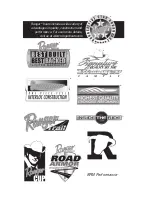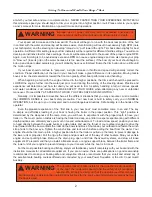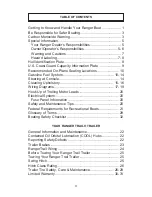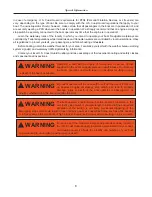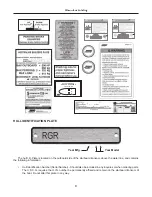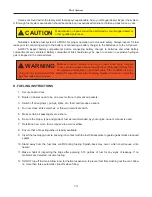
13
Fuel Systems
If areas are found within the fuel system that appear questionable, have your Ranger dealer inspect the system.
A thorough fuel system examination should be made by an experienced marine technician at least once a year.
Naturally a leak-free fuel system is a MUST for proper operation and on-board safety. Always inspect for fuel
leaks prior to connecting wiring to the battery or connecting a battery charger to the batteries or to the AC power.
ALWAYS inspect battery compartments before connecting battery charger to batteries and while battery
compartments are ventilated. Battery compartment lids should always be open to ensure no explosive hydrogen
gas is trapped in the compartment.
H. FUELING INSTRUCTIONS
1. Secure boat to dock.
2. Boats on trailers need to be on a level surface to prevent air pockets.
3. Switch off all engine(s), pumps, lights, etc. that could produce a spark.
4. Do not smoke, strike matches, or throw an electrical switch.
5. Make certain all passengers are ashore.
6. Be sure the proper type and grade of fuel as recommended by your engine owner’s manual is used.
7. Determine how much fuel is required to avoid overflow.
8. Ensure that a fire extinguisher is readily available.
9. Insert the fuel supply nozzle, keeping it in contact with the fuel fill deck plate to guard against static produced
sparks.
10. Stand away from the fuel tank vent/fill during fueling. Splash-back may occur which could cause a fire
hazard.
11. Make a habit of inspecting the bilge after pumping 5-10 gallons of fuel for any signs of leakage. If no
problems are detected, resume fueling.
12. DO NOT top off fuel tank. Allow room for thermal expansion, to prevent fuel from sloshing out the vent. Allow
no more than three automatic click-offs when filling.
Maintenance or repairs should be performed by your Ranger dealer or
other qualified personnel.
CAUTION
Batteries produce hydrogen and oxygen gases when being charged.
These explosive gases escape through the vent/fill caps and may form
an explosive atmosphere around the battery if the ventilation is poor.
This gas may remain around the battery for several hours after charging. Sparks or flame can ignite the
gas and cause an explosion.
WARNING
Summary of Contents for RT Series
Page 20: ...18...


